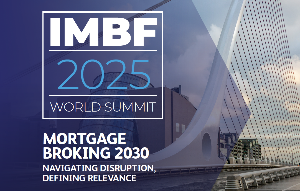Back in December, the Reserve Bank cut the OCR to its current record low 2.5%.
Since then, it has left the door open for further cuts – while emphasising it doesn’t believe that responding to such issues as low inflation with rate cuts is the way to go.
Despite this, it seems that every day the chorus of those expecting the RBNZ to make further cuts to the OCR grows.
Last week alone Kiwibank and ANZ both officially announced they now expect two more cuts to the OCR this year.
ASB, Westpac and HSBC have all been making similar predictions for some time.
However, while the general consensus seems to be that cuts are on the way, the regular mortagerates.co.nz survey reveals that most economists don’t think the cuts will begin just yet.
All but one of the economists who responded to the survey expect the RBNZ to hold the OCR at 2.50% this Thursday.
The exception to this was Infometrics Ltd economist Mieke Welvaert.
She put 60% probability on the RBNZ cutting the OCR to 2.25% this week, and believes it will then trough at that level.
Welvaert is not entirely alone in expecting a cut this week.
Earlier last week, Kiwibank senior economist Zoe Wallis said they think a 25bp cut will come on Thursday. They then expect a further 25bp cut in June.
On the other hand, some economists believe there will be no further cuts to the OCR.
BNZ’s Doug Steel, TD Securities’ Annette Beacher and NZIER’s Christina Leung all said that, at 2.50%, the OCR has hit its lowest point in this cycle.
They all expect the RBNZ to hold the OCR at that level till 2017, at which point the bank will start to hike it.
But most survey respondents believe the RBNZ is likely to make two more 25bp cuts to the OCR, probably in June and August, to take it to a new record low of 2.0%.
ASB chief economist Nick Tuffley said that, while the RBNZ is unlikely to cut this week, it should acknowledge that rates are likely go lower.
“We expect the RBNZ to adopt a stronger easing bias, signalling further rate cuts as imminent - albeit conditional on the data.”
The RBNZ has placed a lot of weight on inflation expectations remaining stable, so they will be uncomfortable that inflation expectations have fallen, he said.
“Given the tone of the recent speech and apparent heavy focus on the sectoral factor model of core inflation, the RBNZ may opt to wait for additional survey measures and another CPI outcome to confirm if further action is indeed required.”
Westpac senior economist Michael Gordon agreed.
He didn’t expect the RBNZ to pull the trigger this week, but did expect a strong signal to the market about the likelihood of lower interest rates.
“The March MPS is likely to present a very different set of forecasts to those in December, where the cash rate had been projected to remain flat at 2.50% for an extended period.
“Developments since then have generally pointed in the direction of even less inflationary pressure than the RBNZ anticipated. As a result, the MPS this time is likely to project a lower path for interest rates over the next year or so.”
Inflation is key, according to HSBC chief economist Paul Bloxham.
While inflation is very low, the RBNZ sees most of the weakness as temporary and still seems reluctant to cut further, he said.
“However, inflation expectations are slipping and we believe low inflation is becoming increasingly embedded, making further cuts necessary.
“The RBNZ are likely to stay on hold for now, but we expect them to signal an increased likelihood of more cuts to come.”




Comments
No comments yet.
Sign In to add your comment